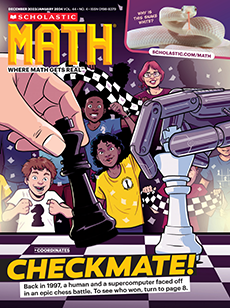Scholastic: Why did you start your lawn-care business?
Max: I have always mowed my parents’ lawn, and I asked my neighbors if they would like me to do theirs too. After that, I started to knock on doors—150 of them! I did a ton of mulching, landscaping, and planting trees. In the lawn-care business, cutting grass is almost the side work.
The real hard work is the landscaping, or making the entire outdoor space look nice. That fills up your days. When you first get somebody interested, you ask them what they are looking to get done. If they already have a flower bed, you could put in mulch or rock. It’s about beautifying the space. The other part is the weekly mowing. Landscaping is a good way to introduce a customer to the grass cutting, and that’s how you get the regular weekly work.
